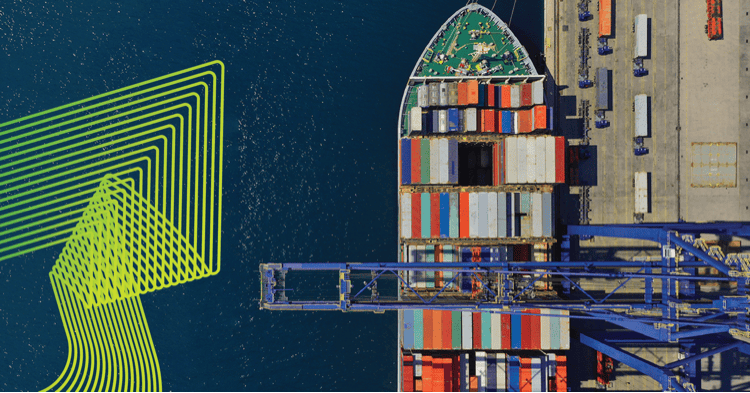Organizations face a multitude of risks each day; one common one is supply chain disruptions. This type of issue is inevitable in today’s volatile world. Advanced solutions that go beyond traditional risk assessment may help organizations identify possible supply chain issues before they become a reality. Leveraging tactics such as predictive insights are critical to maintaining business continuity and competitive advantage.
Focusing specifically on global supply chain risk management, there are eight essential strategies that will empower organizations to proactively identify, assess, mitigate, and respond to potential disruptions. Leveraging these strategies, leaders will be best armed to transform vulnerability into resilience.
The Evolving Threat Landscape: Why Traditional Approaches Fall Short
The supply chain impacts many aspects of an organization’s operations and there are a variety of reasons why a disruption may occur. The three most common reasons behind breaks in the supply chain are: global interconnectedness, the rise of “Black Swan” events, and limited reactive measures. In addition, organizations must account for external supply chain risks, which can emerge from geopolitical instability, regulatory changes, or natural disasters beyond their immediate control. Let’s dive deeper into these three issues.
Global Interconnectedness & Cascading Effects
Disruption in one part of the world can rapidly ripple through the entire supply chain. For example, if a part for a product is being made in a facility and that facility has a fire that stops production, the supply chain for the entire manufacturing of the product. If a ship transporting parts for a product is stopped due to an unknown change in maritime law, the supply chain is impacted again. And if the team who oversees the assembly of a product is unable to come to the factory due to a local political uprising, the supply chain will be impacted.
These are just a few examples – the list of reasons behind supply chain disruption is very long and varied. Avoiding all supply chain disruptions is impossible, but there are tactics to help avoid them. This includes having backup vendors and producers for key parts and monitoring new laws and regulations that may impact the transport of products.
The Rise of “Black Swan” Events
There is an increasing frequency and impact of unforeseen, high-impact events. Without prior experience or knowledge of these events, organizations struggle to properly plan or anticipate how to best react. Examples of Black Swan events include pandemics, major geopolitical conflicts, and unique environmental disasters. While ensuring there is a plan in place for every Black Swan event is impossible, it is possible to plan against many possible scenarios, but it takes time and resources to do the research to identify which Black Swans a specific organization needs to plan against.
Limitations of Reactive Measures
Simply reacting to events is no longer sufficient; the need for proactive supply chain risk management strategies is imperative and critical to the success of an organization. Leveraging data-driven insights is the best way to take a proactive stance in supply chain management.
The Core Pillars of Effective Supply Chain Risk Management (SCRM)
To create an effective supply chain risk management (SCRM) plan, organizations need to focus on a few core principles, which are Visibility & Transparency, and Proactive Intelligence & Predictive Analytics.
When it comes to Visibility & Transparency, security teams should view this as a foundational requirement for any effective supply chain risk management strategy. As one would assume, it begins with a focus on ensuring the team maintains an overarching view of the supply chain process. By keeping a bird’s eye view of the process, teams are best prepared to identify possible risk factors or red flags and proactively address them.
The transparency part comes into play when security teams and decision-makers involved in the supply chain process share information regarding problems, strategy changes, and so on, with other stakeholders. Together visibility and transparency set organizations up to minimize supply chain issues, create trust among all relevant parties and decision makers, and are best set up to keep operations and business headed towards success.
Proactive Intelligence & Predictive Analytics are also key to creating a smoothly operating supply chain process. These activities are not innate in every organization, nor are they found in every risk and threat intelligence solution. Most organizations do need to enhance their internal capabilities and often leverage third-party tools to supplement their team’s activities. After all, there is no team of analysts or security intelligence experts that can monitor and review all of the data being produced today.
If this information is left unmonitored, valuable insight can be wasted and organizations left vulnerable to issues that could have been flagged and mitigated earlier rather than when they have reached a disastrous level.
One vendor whose offering excels in proactive intelligence and predictive analytics is Seerist. Seerist is a security intelligence platform bringing clarity and speed using innovative technologies including Artificial Intelligence (AI), Machine Learning (ML), and Natural Language Processing (NLP) combined with expert human insights.
8 Global Supply Chain Risk Management Strategies
Each of these strategies is important to helping an organization maintain a robust supply chain operation.
Strategy 1: Diversify Your Supplier Base (Multi-Sourcing & Regionalization)
This strategy focuses on reducing an organization’s dependence on single points of failure. To accomplish this, organizations need to explore nearshoring and reshoring to mitigate geographical and geopolitical risks. The most effective way to accomplish diversification of the supplier base is to conduct regular supplier risk assessments and identify alternative suppliers across different regions.
Strategy 2: Enhance Supply Chain Visibility and Digitalization
In order to enhance supply chain visibility and digitalization, teams must implement advanced analytics and AI-powered solutions, such as from a third-party like Seerist, for comprehensive risk intelligence. Teams often decide to utilize digital twin technology and blockchain for improved traceability and transparency – both of which are effective choices. To create the best visibility and digitalization, teams should invest in supply chain software that provides real-time data and predictive capabilities.
Strategy 3: Implement Robust Scenario Planning and Contingency Plans
Organizations looking to create and deploy robust scenario planning and contingency plans must develop detailed plans for various disruption scenarios. These scenarios run the gamut and may include troubling situations such as natural disasters, cyberattacks, and geopolitical instability. In today’s digitally connected business environment, issues that impact a facility in one part of the world have wide-reaching impact and therefore it is essential to have robust plans in place to combat these problems.
Teams must not only develop the right contingency plans for their unique business – leveraging data-driven intelligence is helpful in identifying the most likely threats and risk to plan against – but they need to establish clear communication protocols and decision-making frameworks for rapid response.
Strategy 4: Foster Strong Supplier Relationships and Collaboration
Organizations that spend the time to foster strong supplier relationships will reap the benefits. While it takes time to move beyond transactional relationships to create strategic partnerships, the benefits are well worth this investment. Partners may have information that an organization does not and if the communication channels are open, they will share this insight freely. Additionally, the two entities can collaborate on risk mitigation strategies. Having strong relationships is an investment, but it’s one that can pay off astronomically.
Strategy 5: Optimize Inventory Management
Optimizing inventory management is an exercise in balancing cost efficiency with resilience. Does an organization want to invest in creating a “just-in-case” contingency plan? Or do they want to be in a reactive state and hope they are able to create a mitigation strategy “just-in-time”? It’s a wiser option to create a strategic buffer stock for critical components or finished goods. Avoiding a stressful scramble to try to keep operations running despite inventory issues is a wise decision.
Strategy 6: Strengthen Cybersecurity Across the Supply Chain
Organizations must recognize the supply chain is a primary target for cyber threats. With so much information being shared electronically, there are many opportunities for cyber criminals to make an attack. It is crucial for teams to implement robust security measures and conduct regular audits of supplier systems.
Strategy 7: Build a Culture of Risk Awareness and Training
In order to truly support supply chain risk management, the entire organization should be embracing a culture of risk awareness. This will start at the top – leaders need to show their support of this initiative and set aside the resources to empower employees at all levels to identify and report potential risks. Understanding risks and threats is the first step in creating a strong risk management culture. Once employees understand risks, what they are and their potential impact, they can integrate risk management KPIs and decision-making.
Strategy 8: Leverage Predictive Risk Intelligence for Proactive Decision-Making
The security industry has changed a lot in recent years and due to the vast amount of information being created and circulated on a daily and hourly basis, teams can no longer manage to monitor, review, and synthesize this information alone. They need tools to automate this process and help them glean the pertinent information from the chatter to create the best strategic plans for their brand, assets, people, and business operations. Augmented analytics, such as that delivered by Seerist, combines human insight with AI to deliver superior accuracy – making it possible for teams to stay informed while having the time available to develop strategic plans instead of weeding through alerts.
Predictive tools will help organizations anticipate events, understand their potential impact, and make rapid, strategic, and reliable decisions.
Committing to a Multi-Faceted Supply Chain Risk Management Strategy
Organizations need to move beyond reactive measures and embrace proactive, intelligence-driven solutions. This is the most effective way to support a successful supply chain risk management initiative.
Seerist’s augmented analytics solution empowers global corporations, governments, and organizations to navigate uncertainty by delivering greater accuracy and relevance in risk and threat analysis, enabling better prediction and strategic decision-making.
There is no denying the multitude of problems that can negatively disrupt the supply chain. The risks are many! From natural disasters to political uprisings to travel roadblocks to other complications that can derail the global supply chain, organizations have a lot to anticipate and manage. Establishing a resilient supply chain risk management strategy will help leaders navigate disruptions and build resilience in an increasingly volatile world. If your team needs insight on how to do this efficiently, reach out to Seerist for support and a demo today.






